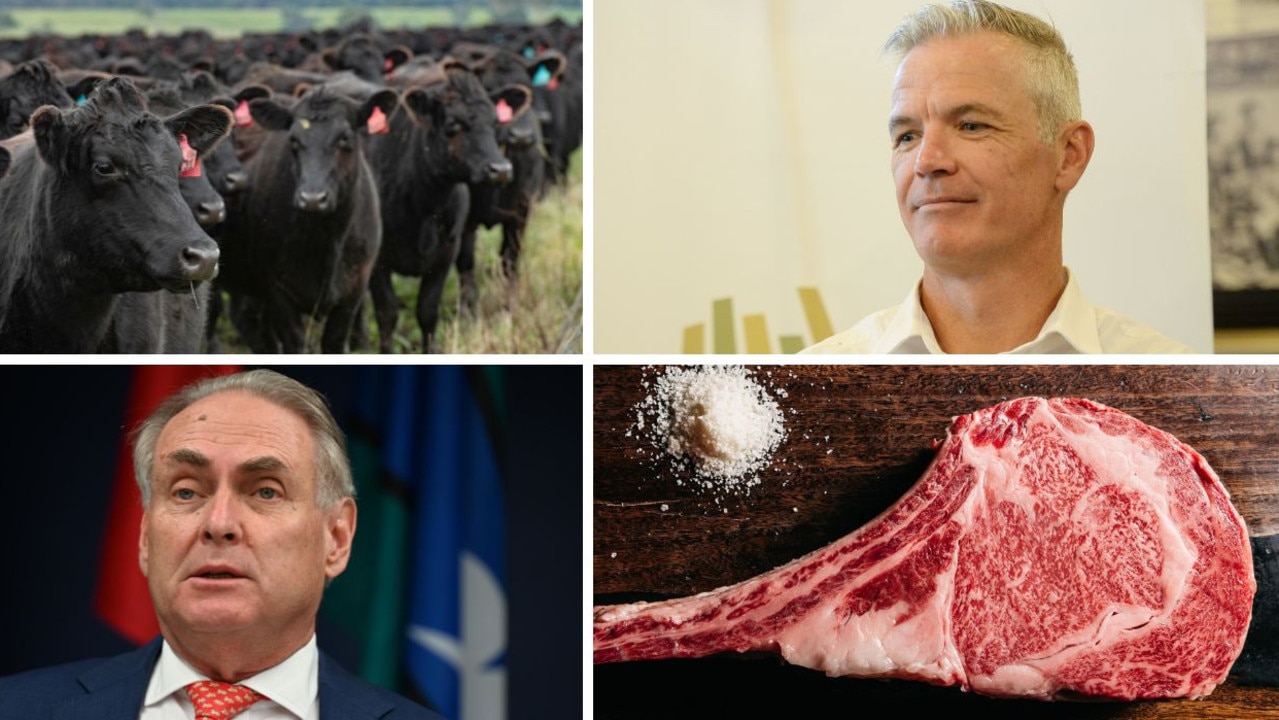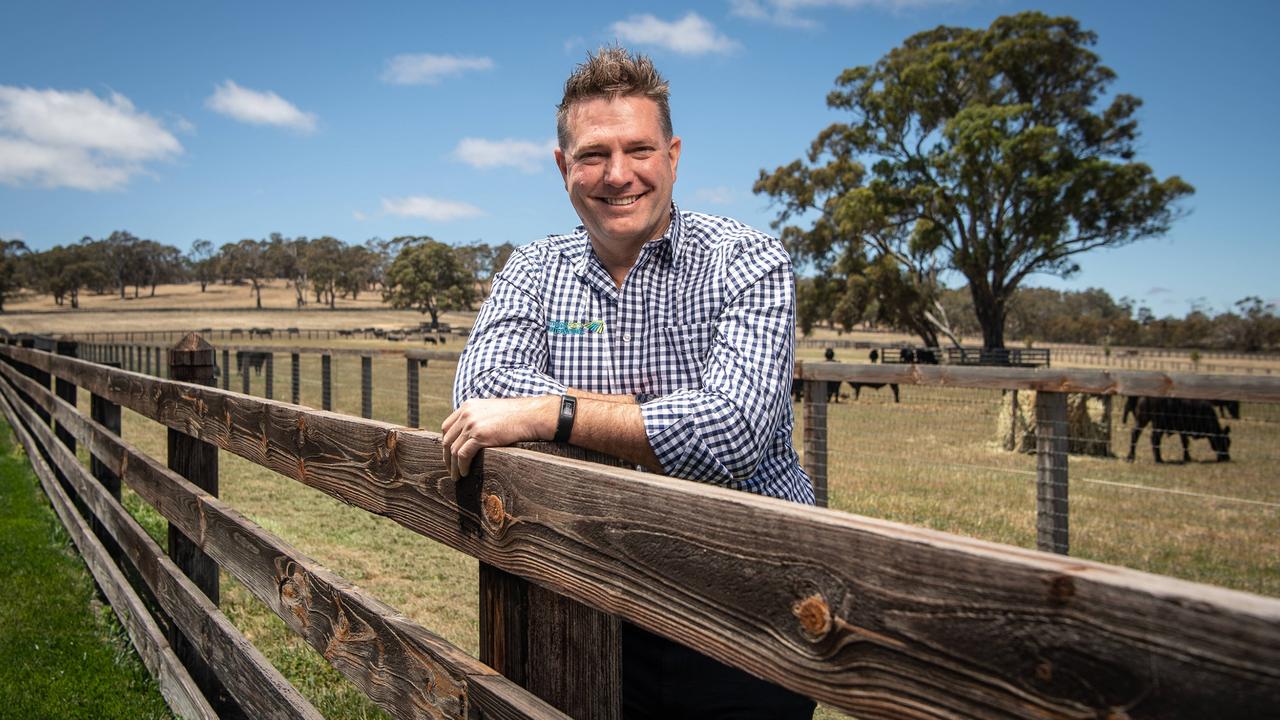Meet the young graduates meeting agriculture’s huge need for professional talent
Sophie Angus has ditched Sydney for a well-paid role with a leading lamb producer. Here’s why she wants to help fill ag’s skills shortage.
Agribusiness
Don't miss out on the headlines from Agribusiness. Followed categories will be added to My News.
Sophie Angus lives a five-hour drive and a world away from Sydney’s northern beaches where she grew up in a white-collar family with little affinity for farming.
Despite this, the 22-year-old has joined a small but growing constellation of tertiary-educated city kids scattering through the so-called “new ag” universe.
Sophisticated, smart and ambitious urbanites answering the call of an industry both hungry for and starved of skilled graduates in fields from artificial intelligence to genetics and merchandising to capital and finance.
They are seizing an opportunity to help solve some of the world’s greatest social and environmental challenges.
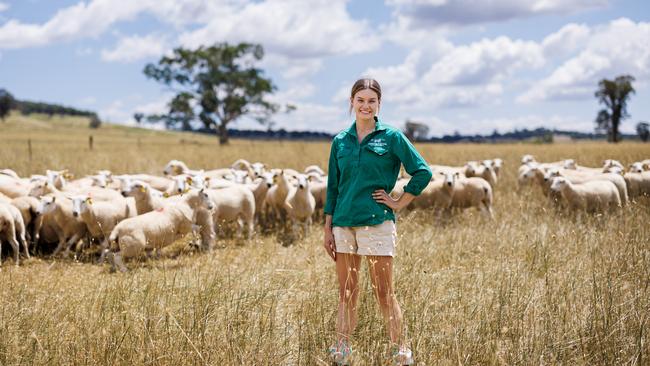
And revelling in “off-the-wall” jobs mixing old agrarian existences, lived by the rhythm of the weather and seasons, and the hardwired worlds of corporate think, research, spinning clocks and cutting-edge tech.
Angus’s unlikely journey started with agriculture electives during her Higher School Certificate at the prestigious Pymble Ladies’ College. Her curiosity piqued, she graduated with a Bachelor of Science and Advanced Studies (Agriculture) at Sydney University in 2021.
A few months later and she was drenching, crutching and tagging as a farmhand for Lambpro, a leading prime lamb seedstock business run by Holbrook sheep farmer Tom Bull, on NSW’s southern slopes.
“The industry is so large and with seemingly endless opportunity, but I was attracted to the red meat industry and heard about the genetics and technology Lambpro are using and luckily, they took me on,” she says.
Angus was recently appointed the operation’s supply chain manager and, barely a year out of university, she is trialling a leading-edge near-infra-red device, made by Japanese company Soma Optics, in a project with Meat and Livestock Australia.
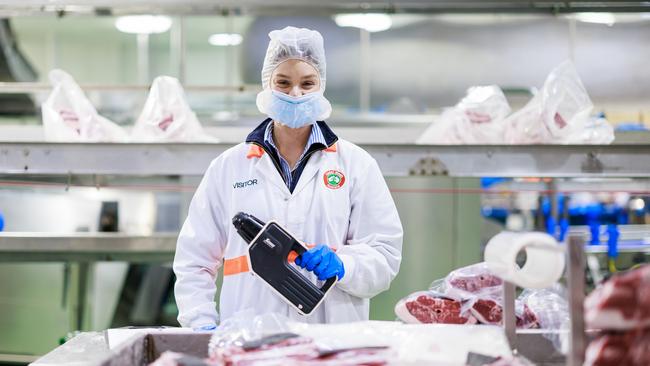
“We wanted to measure the intramuscular fat these animals are producing to better predict quality and give clients an understanding of what they are purchasing,” she says.
“It is amazing information. I’m working on a farm and in the city, in abattoirs, using technology, reading data, interacting with clients and at the forefront of a premium lamb brand and helping get it on the shelves in the US.
“My parents and friends still think it’s all a bit odd. But this is way beyond anything I thought I would be doing in ag, even a year ago.”
RECRUITING WAR
The odds are currently good for those wanting a job in agriculture with six jobs advertised for every agriculture graduate and an employment rate of 92 per cent.
Agribusiness recruitment agency director Mick Hay, of Rimfire Resources, says many of the on- and off-farm jobs being advertised simply did not exist a decade ago.
“There are heaps and heaps of kids from the cities doing ag degrees, not mainstream courses, and then trying to get a job in ag,” he says.
“The universities have also reported strong intakes through all the ag disciplines recently. The greater choice is exciting because it means the industry is evolving and offering more attractive opportunities.”
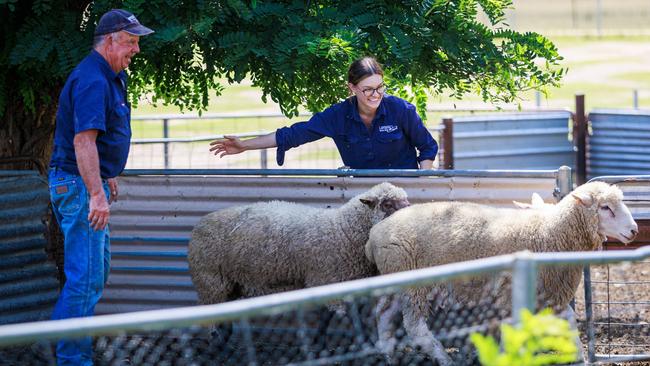
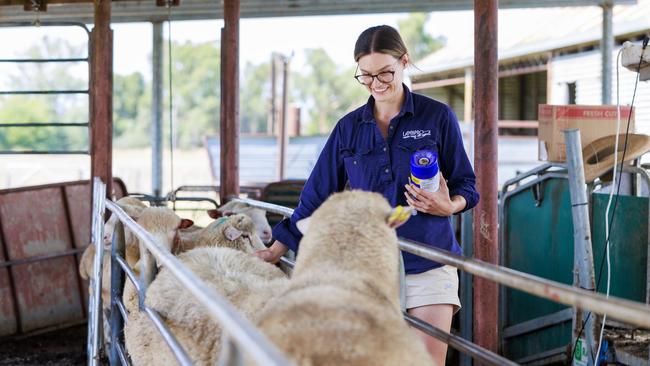
But the reality is the more than 900 university ag graduates entering the industry each year is falling far short of the 5000 to 6000 ag positions being advertised.
And, of the 4000 off-farm agribusiness jobs going unfilled, more than 1000 are based in cities.
Bottom line, the shape of ag’s future somewhat relies on finding thousands more people like Sophie Angus.
The question is how, with sectors like health, commerce, mining, manufacturing and big tech fishing in the same talent pools.
Hay says a “genuine war” is being waged for good talent, with that talent wanting to work for strong brands doing something meaningful.
“That becomes crucial when there is a fight on for good people and that is a distinct advantage that ag now has,” he says.
This point cannot be underestimated with 2020 research finding many city-based youth still view farming as traditional, poorly paid, and bad for the environment.
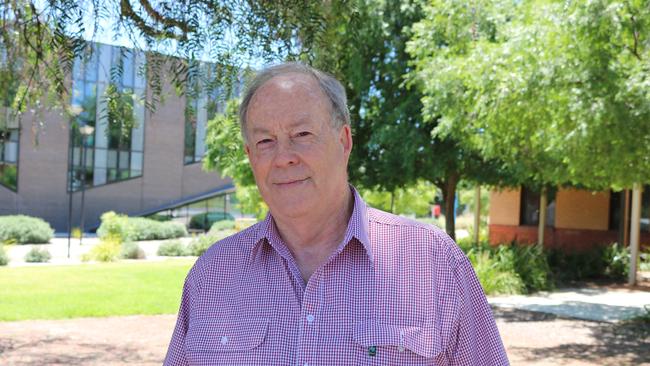
Charles Sturt University emeritus professor of agriculture Jim Pratley says that what ag places in the shop window to attract smart, young and ambitious outsiders is becoming crucial.
“But we have had a real difficulty promoting how good ag is as a career to those in the cities and people in other courses and industries,” he says.
Seeing others in technology-rich, well-paid and purposeful jobs may provide the images of contemporary Australian agriculture it so desperately needs to increase recruitment within city limits.
RISE OF THE TECHNOLOGISTS
Ashley Rootsey was inching his way towards engineering, the family business, before he signed up for ag classes to break up the stress of high school science and maths. A simple twist of fate.
“I loved peeking behind the curtain to see how complex and crazily impressive it is that we get food on the shelves and tables each day,” Rootsey says.
“Then I started to see more and more how the science and maths I was studying could be used in ag.”
Five years ago, Rootsey graduated from Sydney University with a Bachelor of Food Science and Agribusiness and started with start-up Food Agility CRC “when agtech was still a little undercooked”.
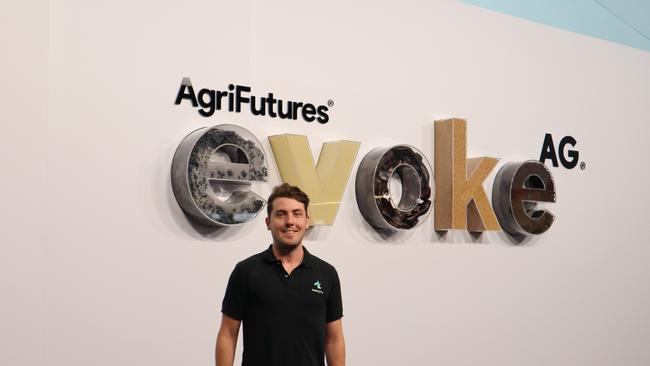
He remains at the now $150 million-plus innovation hub using machine learning, artificial intelligence and, increasingly, robotics to make the local agrifood industry more sustainable and globally competitive.
His portfolio of projects includes extensive grazing to oyster food safety and, currently, using robots to improve autonomous crop spraying in wine grapes.
“Whenever we ask a new team member why they joined they say that there’s other fields they could be working in, but think it is more meaningful and impactful to be working on interesting problems to help society,” he says.
Rootsey says the simple maths is that the more successful agtech companies become, the more “non-ag technologists” will enter the industry.
“The faces are certainly changing quickly. Five years ago, the industry felt older, greyer, more traditional, and now, while it is still niche, you go to an ag event and there’s a lot more people wearing T-shirts and jeans,” he says.
THE BARKER BLUEPRINT
About 50,000 students sit for the HSC each year in Sydney, with 1 per cent, or 500 students, sitting the agriculture exam.
Similar to Sophie Angus, Rootsey says ag electives offered by his high school alma mater, Barker College, legitimatised it as a career option.
The short history is the school nearly scrapped its ag offerings in the mid-2000s due to a lack of interest.
Now it has more than double the number of HSC ag students than any other school in Australia, its enrolments tripling in recent years.
About 30 per cent of those go on to study agriculture at university.
The turnaround has been attributed to teacher Scott Graham; the feat so well-regarded he was awarded the prestigious 2021 Prime Minister’s Prize for Science.

The curriculum, according to Graham, is built to provide a better understanding of the opportunities in agriculture “both rural and urban”.
“It used to be countercultural to study ag but we have managed to normalise it and have a lot of former students working in ag in metropolitan areas,” he says.
Pratley, who has dedicated his life to agricultural education, hopes government will help roll the Barker blueprint through other secondary institutions.
As a member of the Australian Council of Deans of Agriculture, Pratley has advised government ministers and departments as much privately.
“That is just one school, if we could replicate that success in three or four more schools, and keep building, what a difference that could make to the industry,” he says. “The younger people with new ideas and skills coming in are what I call the ‘new ag’. The need for those with tertiary degrees on-farm and in all 12 categories of off-farm employment is booming.”
Just exactly what the demand is and who is going where is a little unknown as that data, according to a frustrated Pratley, could be better collected and used by government and industry.
The demand for on-farm management personnel, based on internet ads, increased by 160 per cent between 2015 and 2021 and off-farm professional demand by 44 per cent over the same period, but an extraordinary 70 per cent in 2021 and 2022 alone.
PROMISING SIGNS
While the urbanite cohort represents the best chance, based on numbers alone, to increase supply, Pratley says demand will not soften and it cannot be the only source.
He believes helping regional universities offer more off-farm career courses will keep more regional kids in the regions.
There are also promising signs elsewhere.
The National Farmers’ Federation’s fledgling AgCAREERSTART program recently placed a baker in a dairy farm, a builder on a beef station and a qualified chef on a viticulture property.
Then there’s James Greenacre, who threw in a legal career to run a Tasmanian dairy, and Erin Twigg, who graduated with a health science degree but has gone shearing in southwest Victoria.
The curiosity exists.
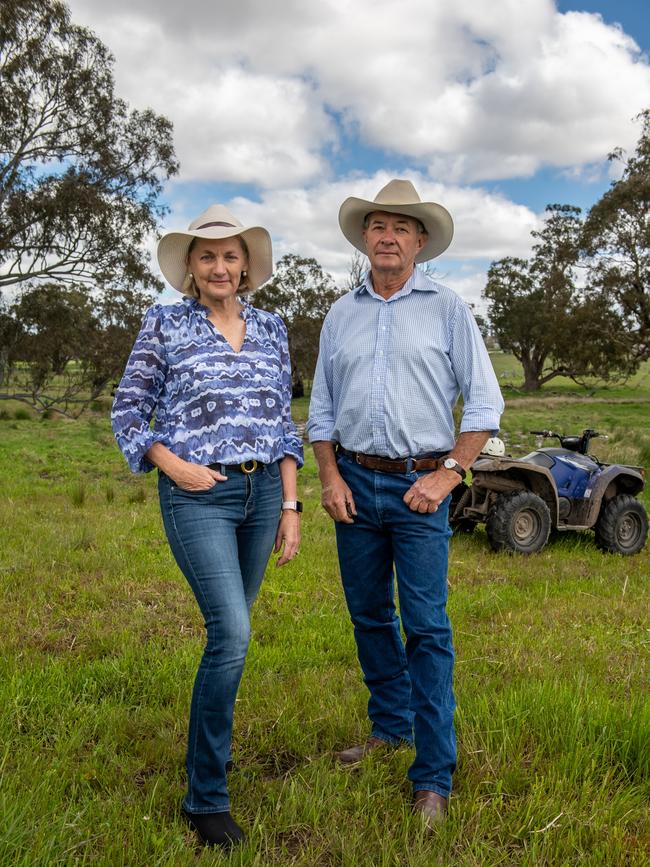
Queensland’s Prue Bondfield swapped a legal career for hard yakka more than 30 years ago and grew a 50-cow stud into one of Australia’s largest commercial cattle enterprises with husband David.
She says, anecdotally, more city kids working gap years on cattle properties are staying on-farm after the 12 months expired or going on to study agriculture.
“This was not the case even five years ago, we are seeing it all the time now, it seems to give them a sense of belonging and identity, it is quite exciting,” she says.
“I know a young lawyer born in Brisbane, working in a Brisbane law firm’s tax section, and she proudly says that all she wants to do is agribusiness work.
“There’s a lot like that now in accounting, law and banking, wherever. City kids and farm kids who want to be part of agriculture but not necessarily on farms if that doesn’t fit their capabilities.”
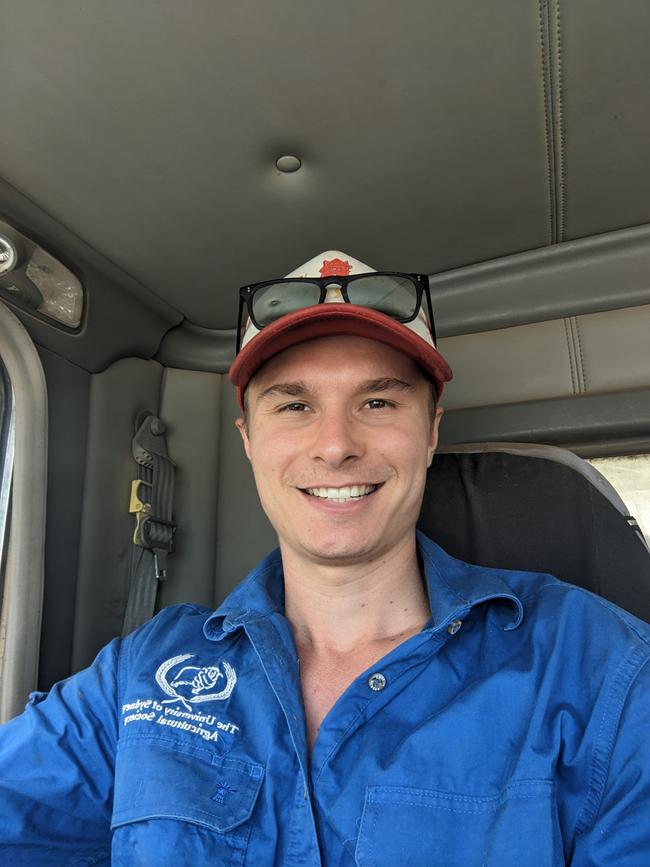
Tom McPherson is one whose farming plans are more cerebral than physical, hoping to forge a career at the nexus of agtech and finance after completing his university studies.
Another whose flame was lit in high school ag.
“We have these massive targets for our ag industry and hitting a $100 billion of economic contribution is not going to happen without innovation and technology,” the 22-year-old Sydneysider says. “And that won’t happen without capital, and not capital just being there, but being allocated and used appropriately.”
HOMECOMING
In news to gladden the hearts of producer parents, there are also more farm kids returning home after working for extended periods in the big smoke.
Five years ago, Charlie Perry had progressed to be a project manager for Ernst & Young in Sydney after joining the company as a commerce-arts graduate in 2008.
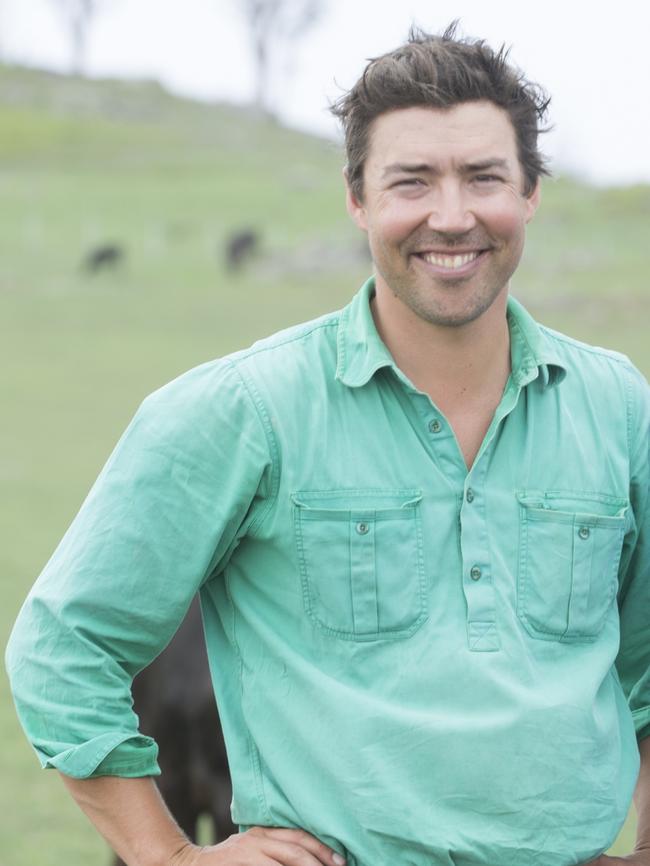
The 37-year-old is now director of the family farm, Trent Bridge Wagyu, on the NSW Northern Tablelands, and uses his corporate skills to build a rigorous business framework around the livestock operation.
“If I look at the 30- to 45-year-old farmers now, a lot have followed that alternate career path of getting a form of tertiary education,” he says.
“Some go away to have a career with the idea of re-entering ag later, like I did, because that is your passion, and when you move back you have the business confidence.
“Stronger commodity prices are also helping meet salary expectations.
“For a long time, there was an idea that you had to forego financial reward for the lifestyle choice, you don’t have to be asset rich and cash poor anymore and that is a big reason why more farm kids are coming home that might have stayed in the city.”
But there is always a twist, Pratley reveals a plot hatched in the new millennium by ag teachers may be partly responsible.
“We used to see a lot of graduates go straight back to farms, last a few years and leave and be lost to the industry,” he says.
“So, we actively started encouraging graduates to make it in the real world and return later as part of their career progression.
“That generational change taking place is quite significant now. The young farm managers aged 25 to 40, using modern techniques and smart tech, are going gangbusters.”
New ag is holding cards it has rarely been dealt in being a potential employer of choice for the mobile, ambitious and conscientious professional. It is up to the industry and government to go get them.
Originally published as Meet the young graduates meeting agriculture’s huge need for professional talent



